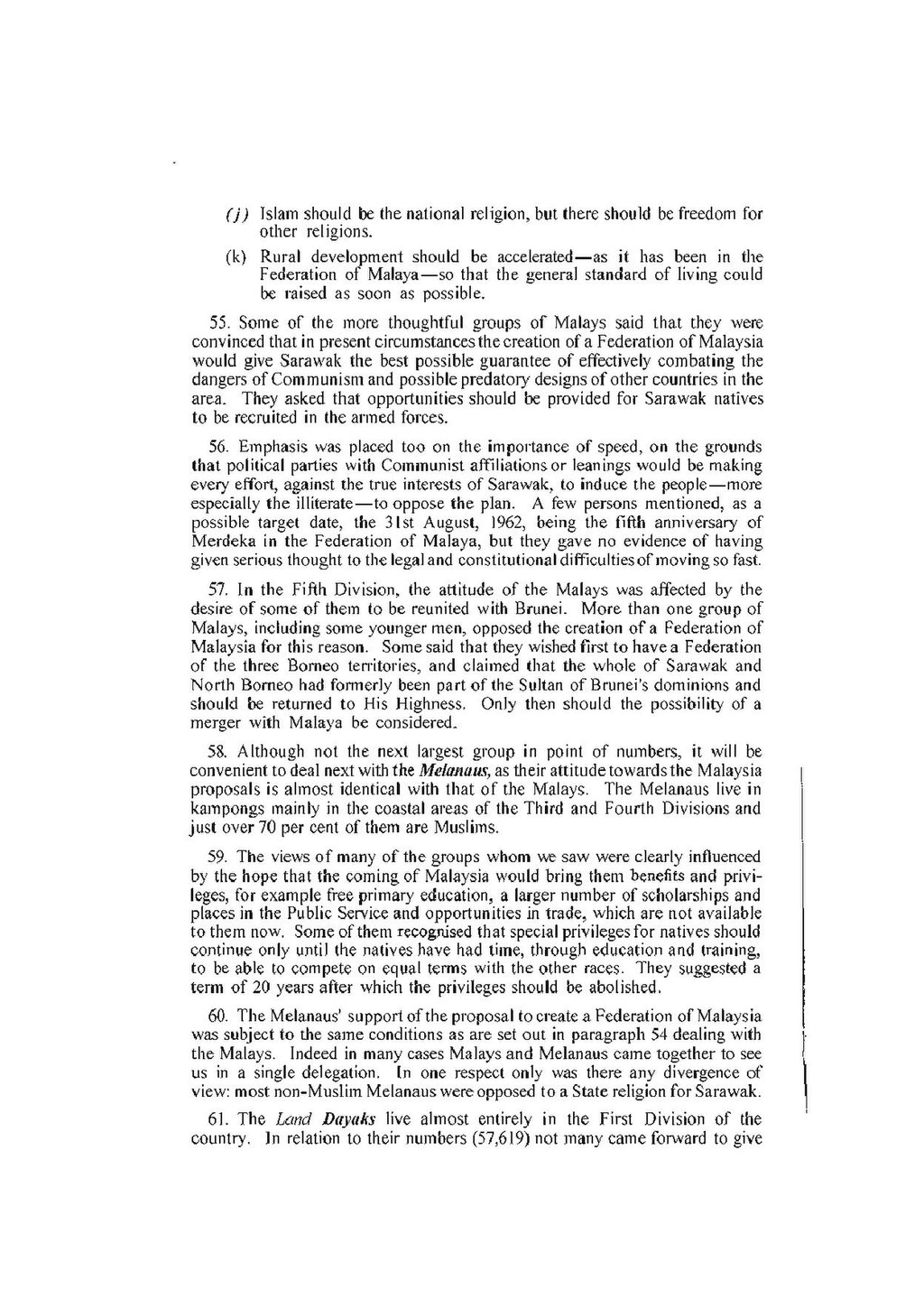55. Some of the more thoughtful groups of Malays said that they were convinced that in present circumstances the creation of a Federation of Malaysia would give Sarawak the best possible guarantee of effectively combating the dangers of Communism and possible predatory designs of other countries in the area. They asked that opportunities should be provided for Sarawak natives to be recruited in the armed forces.
56. Emphasis was placed too on the importance of speed, on the grounds that political parties with Communist affiliations or leanings would be making every effort, against the true interests of Sarawak, to induce the people—more especially the illiterate—to oppose the plan. A few persons mentioned, as a possible target date, the 31st August, 1962, being the fifth anniversary of Merdeka in the Federation of Malaya, but they gave no evidence of having given serious thought to the legal and constitutional difficulties of moving so fast.
57. In the Fifth Division, the attitude of the Malays was affected by the desire of some of them to be reunited with Brunei. More than one group of Malays, including some younger men, opposed the creation of a Federation of Malaysia for this reason. Some said that they wished first to have a Federation of the three Borneo territories, and claimed that the whole of Sarawak and North Borneo had formerly been part of the Sultan of Brunei's dominions and should be returned to His Highness. Only then should the possibility of a merger with Malaya be considered.
58. Although not the next largest group in point of numbers, it will be convenient to deal next with the Melanaus, as their attitude towards the Malaysia proposals is almost identical with that of the Malays. The Melanaus live in kampongs mainly in the coastal areas of the Third and Fourth Divisions and just over 70 per cent of them are Muslims.
59. The views of many of the groups whom we saw were clearly influenced by the hope that the coming of Malaysia would bring them benefits and privileges, for example free primary education, a larger number of scholarships and places in the Public Service and opportunities in trade, which are not available to them now. Some of them recognised that special privileges for natives should continue only until the natives have had time, through education and training, to be able to compete on equal terms with the other races. They suggested a term of 20 years after which the privileges should be abolished.
60. The Melanaus' support of the proposal to create a Federation of Malaysia was subject to the same conditions as are set out in paragraph 54 dealing with the Malays. Indeed in many cases Malays and Melanaus came together to see us in a single delegation. In one respect only was there any divergence of view: most non-Muslim Melanaus were opposed to a State religion for Sarawak.
61. The Land Dayaks live almost entirely in the First Division of the country. In relation to their numbers (57,619) not many came forward to give
